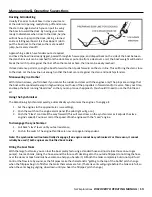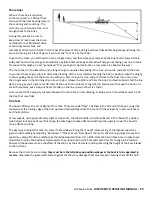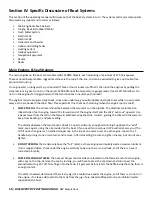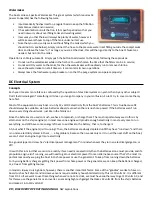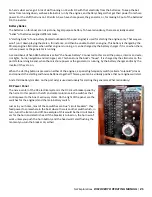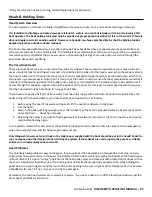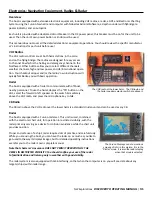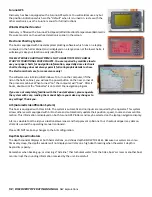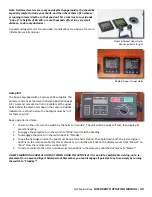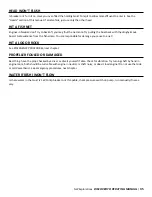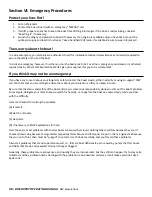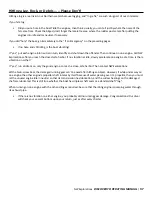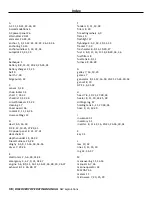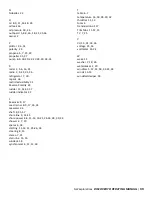
NW Explorations
DISCOVERY OPERATING MANUAL
|
27
If the generator will not keep running, call NW Explorations for assistance.
Heads & Holding Tanks
Head System Overview
The head system on this boat is reliable, straightforward, and easy-to-use. First, a note about discharge of sewage:
It is forbidden to discharge untreated sewage in inland US. waters, an area that includes all US. waters in which this
boat operates. The boat holding tank must only be emptied at proper pump-out stations if it is in US. waters. (This rule
does not apply in certain Canadian waters. However, in Canada, courteous practice dictates that the holding tank be
dumped only when outside confined marinas.)
The boat is equipped with two Vacu-Flush Marine heads. These heads each have a separate vacuum pump which mac-
erates waste and puts it into a holding tank. The holding tank is emptied either of two ways: by operating an overboard
macerator pump controlled at the DC power panel, or by pumping it using a shore side pump out station through the
boat’s side-deck pump out fitting.
The Vacu-Flush Heads
These premium heads are easy to use, odor free, and very reliable. They work with a separate vacuum pump and vacu-
um accumulator tank for each head. A vacuum is maintained in the tank until the head is used, when the waste matter in
the bowl is sucked out of the head by the vacuum, then it is pumped through the system by the head pump, which then
also pumps up a vacuum again. Note that it is this rush of the head’s contents caused by the accumulated vacuum that is
important to the head’s operation! This sudden rush causes any solid material in the waste stream to be shattered as it
passes through the specially- shaped orifice in the bottom of the head. For this reason, proper head operation requires
that the head pedal not be held down for long periods if time.
These heads use about a half pint of fresh water from the ship’s supply with each flush. Each head is operated by a the
pedal to the left of the head base (as you face the head), and operation is as follows:
1. Before using the head if the waste will be solid, lift the pedal to add water to the bowl;
2. Use the head;
3. Step on the pedal just long enough to hear the “whoosh” as the head is evacuated and a small amount of water
rinses the bowl - - - about five seconds!
4. Releasing the pedal, if you wish to flush again, wait at least twenty seconds or so (until you hear the head pump
stop) before flushing again.
As the pedal is released, the ball-valve at the bottom of the head seals the head so that the vacuum can be pumped up,
when the pump will stop, and the head is again ready for use.
Only things which were eaten or drunk or the toilet paper supplied with the boat should be put in the heads! Facial tis-
sues, tampons, and other foreign matter will clog the system. If these heads are used properly, they are very reliable.
Failures are virtually always due to misuse!
Head Problems
The only likely head problem is easy to diagnose, for you will hear the head pump run frequently or not stop, and you
will see that no water remains in the bowl. This indicates that the ball valve is not sealing the bottom of the head proper-
ly! Most often this is due to “wimpy” operation of the head pedal: press and release it with prompt foot motions so that
the seal is completely closed after use. If re-flushing does not make the seal perform properly, then, while holding the
pedal down, run your finger around the inside of the seal opening to be sure no grit or other foreign matter has become
imbedded in the seal; if it has, remove it, and try the seal again.
Remember, the two head systems are completely separate: If you have trouble, turn off the faulty head and use just the
other head; call NWE for assistance.

